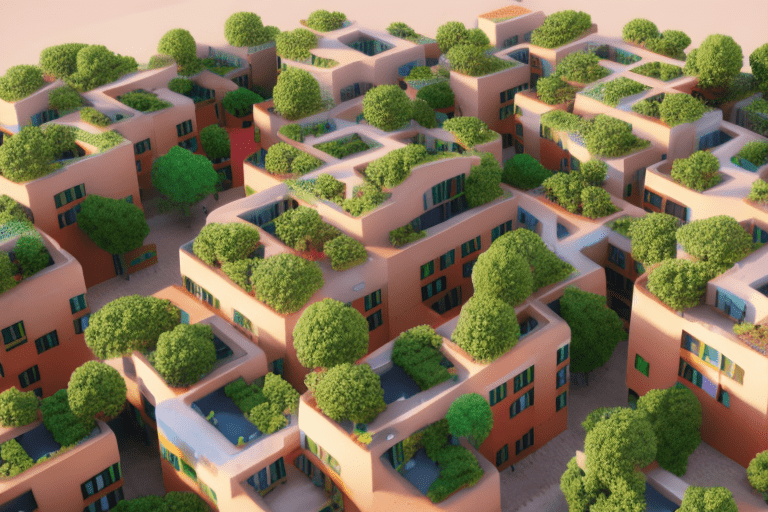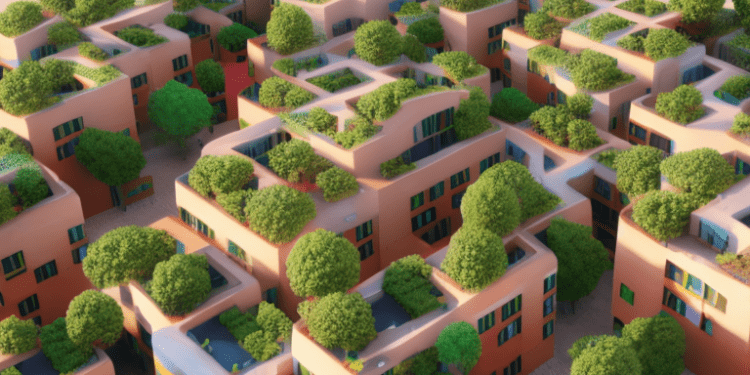14Trees, a joint venture between British International Investment, the UK’s Development Finance Institution (DFI), impact investor and Holcim, has successfully completed the largest 3D-printed affordable housing project to date. The 10 housing units in Kenya’s Mvule Gardens project were made possible with TectorPrint, Holcim’s proprietary 3D printing system, produced in Kenya for the first time.
The project has achieved an EDGE Advanced sustainable design certification by IFC, the World Bank’s development finance institution, which recognizes resource-efficient buildings with the potential to be zero-carbon. This is the first time a 3D-printed housing project has attained this certification.
TectorPrint is the first Holcim dry mortar product range for 3D printing and has been developed in collaboration with the Holcim Innovation Center. This new product range includes both cement and natural hydraulic lime solutions, and covers convert pressure levels between 2 MPa up to 90 MPa for high print speed capacity. It is flexible and can adapt to a wide variety of customer needs, in both residential and infrastructure projects. As 3D printing technology uses only the materials the building requires, it helps optimize the amount of materials used and minimize errors in the construction work.
François Perrot, Managing Director of 14Trees, said: “With 3D printing, you can solve two problems at once. You can build faster and with better cost efficiency, which will help make affordable housing a reality for the majority. In addition, you can build with less materials, which preserves the resources of the planet for future generations.”
Miljan Gutovic, Region Head for Europe at Holcim, added: “I am very proud of the work done by 14Trees in Africa, where their innovations in 3D printing technology are accelerating affordable and sustainable building. I look forward to 14Trees replicating these successes in Europe and other parts of Africa in the very near future.”
Building on 14Trees’ world-first 3D-printed school in Malawi, the Mvule Gardens 52-house complex is scaling up affordable housing in Kenya to help bridge the country’s infrastructure gap and deliver affordable, climate-friendly homes at scale. The complex is being printed in phases of 10-15 houses and tests new innovations with each phase. The 3D printer used is capable of building structures more than 10 meters long.
The UN Habitat’s World Cities Report 2020: The Value of Sustainable Urbanization states that prospective homeowners all over the world are compelled to save more than five times their annual income to afford the price of a standard house. It also says 1.6 billion people, or 20% of the world’s population, live in inadequate housing, of which one billion reside in slums and informal settlements. Automation and increased productivity enabled by 3D printed homes could be one of the best avenues to address this housing crisis globally.
14Trees is using 3D printing technology to create highly-skilled jobs, with local workers being trained as 3D machine assistants and specialists. This technology also supports faster construction of affordable and sustainable homes at scale with less materials used, preserving resources for future generations. I am really looking forward to seeing more projects like this that can help address the housing backlog affecting many countries on the African continent and around the world.
FAQ
Q1. How electric car batteries work?
A1. Electric car batteries are typically lithium-ion batteries that store energy and power the motor. They are recharged by plugging the car into an electric outlet or charging station.
Q2. What electric car has the longest range?
A2. The Tesla Model S has the longest range of any electric car currently on the market, with a range of up to 370 miles on a single charge.
Q3. How electric car batteries are recycled?
A3. Electric car batteries are recycled by breaking them down into their component parts and then separating out the metals, plastics, and other materials for reuse. The metals are melted down and reused in new products, while the plastics and other materials are recycled into new products.








